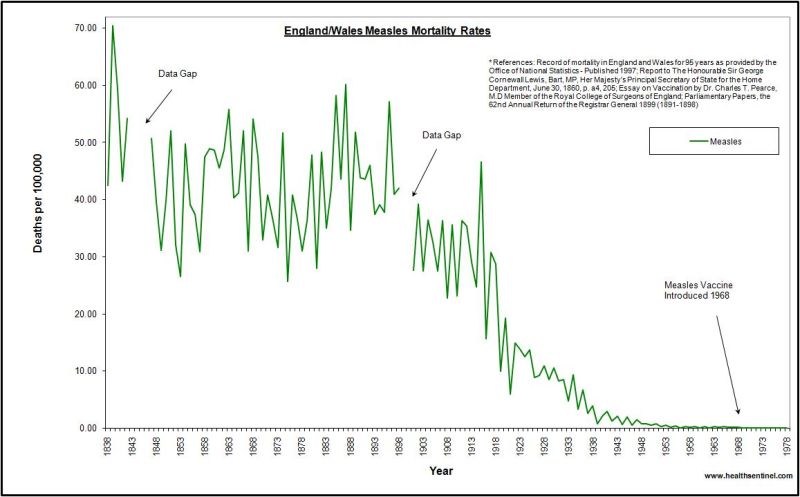The Dangers Of Whooping Cough Vaccination – Prof. Gordon Stewart
Professor Gordon Stewart’s views make him unconventional among medical men but his opinions and advice are of great importance to the parents. To Professor Stewart, whooping cough vaccination spells one word:
DANGER
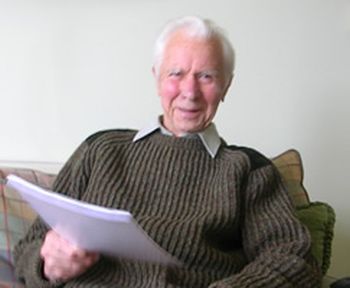
Professor Gordon T. Stewart
Emeritus Professor of Public Health, Glasgow University
Do You Want to Remain Informed about the Latest Vaccine News?
BECAUSE whooping cough has become more prevalent during the past two years, when vaccination of infants against this disease has declined, many people are naturally inclined to assume that there is a connection. Some experts — for instance Sir George Godber, who was formerly Chief Medical Officer of the Department of Health and Social Security — have stated unequivocally in the medical Press and elsewhere their view that the recent outbreak has occurred because few children are being vaccinated. This is probably the view of the majority of doctors and experts on infectious diseases, including those on the Government’s Advisory Committees.
The contrary view, with which I am identified; is that vaccination has been at best only partially effective in controlling whooping cough and has never been proved to be adequate in protecting infants below one year of age who are in the United Kingdom at least, the only group of children whose health is seriously menaced by whooping cough.
As I view the problem, the marginal advantages of the vaccine in children over one year of age have to be offset against adverse effects of the vaccine itself, which are very common indeed and may be followed occasionally by irreversible brain damage, paralysis and mental deficiency. Because of this danger, or for fear of it, many parents and doctors are reluctant to vaccinate their children.
Despite the reassurances of their advisers, the Government shares this fear and has offered compensation to any children shown now or in the past to have suffered brain damage from this (or any other) vaccine.
————————————————-
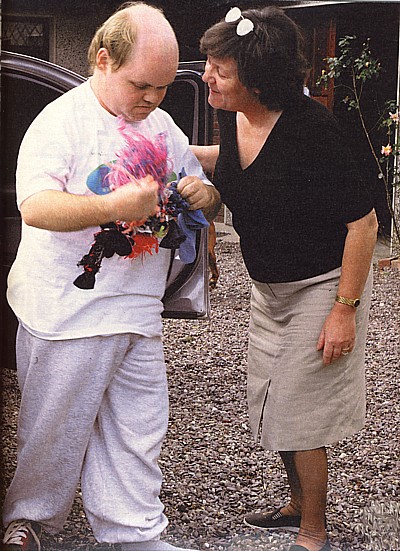
Photo: An Irish court ordered a vaccine manufacturer to pay Margaret Best more than £2.75m plus costs in compensation for the brain damage her son Kenneth Best had suffered as a result of a vaccination against whooping cough he was given in 1969. SOURCE
————————————————-
They have not abandoned their policy that all children should be vaccinated against whooping cough, in common with diphtheria, tetanus, poliomyelitis and measles, but they are now much less firm in their recommendations about whooping cough (pertussis) vaccine. Since restoration of the vaccination programme would mean that over 500,000 infants would receive three injections in the first year of life, it is obvious that the pros and cons should be carefully evaluated.
COMPLICATIONS
In assessing the rise or fall of any infectious disease, it is essential firstly to look critically not only at its prevalence now, but also at what has been happening in the past. When this is done, it becomes clear that most of the major infectious diseases, especially those of childhood, have decreased in prevalence and mortality in all developed countries more or less continuously for 50 years or more.

There was a time when whooping cough, in common with scarlet fever, diphtheria and measles, caused many deaths or gave rise to complications followed by ill-health for years, sometimes permanently. These days passed, in Britain at least, 30 or more years ago. Deaths from any of these diseases are now very infrequent indeed. Health-damaging complications are also rare, most attacks being brief though still distressing at the time, especially the misery of measles and the paroxysms of whooping cough But the essential fact is that the decline in prevalence and severity of these major infections, and several others occurred before there was any national vaccination programme.
The first major programme in the UK was vaccination against diphtheria, begun in 1941, and this seems undoubtedly to have hastened the disappearance of diphtheria, but there was no extensive vaccination against whooping cough until 1958, by which time mortality was very low indeed and prevalence decreasing.
Vaccination against measles was introduced in 1968 but abandoned because of lack of effectiveness and unpleasant side effects. A new, more potent, live vaccine was introduced in 1974 and is now being given to about 50 per cent of children aged 1-2. There is no vaccine against scarlet fever, but this disease, like the others, has continued, to decrease in prevalence and morbidity.

From these facts, it is self-evident that factors other than vaccination play a large part in the decrease in prevalence and severity of infectious diseases. So the question becomes to what extent, if at all, vaccination contributes to control as compared with other factors, and to what extent its benefits — if any — are neutralised by dangerous or potentially dangerous side-effects. It is obviously important also to identify the other factors which govern the decline in these diseases to see how they could be harnessed in control programmes. It has been one of my special interests as a physician and epidemiologist for many years to look at infectious diseases in this way to assist in the development of more rational, broad-front control policies.
DISEASES
If the natural history of whooping cough in the UK is examined closely, it is apparent that despite an overall trend of decline since about 1870 (when figures were first recorded), there were brief upsurges after World War I and during and after World War II. The upsurges in the post-war periods were parallel to the increased birth rate after both wars, reflecting the general rule that infectious diseases in young children occur more frequently when there are more young children around.
The rise during World War II coincides exactly with the period of bombing of cities in 1941 – with consequent crowding and herding under blackout conditions. It was largely because of the post-war increase that, in 1948, the Government sponsored a major trial of various pertussis vaccines.
Early results, reported by the Medical Research Council in 1931 and 1956, indicated that certain American vaccines were very effective, though by no means devoid of adverse side-effects. On the basis of these results and of some reports of uncontrolled trials in the USA, the Government decided to introduce a national vaccine programme. Three manufacturers — Glaxo, Burroughs Welcome and the (Government-owned) Lister Institute were invited to co-operate in preparing vaccines for general use under Government supervision. All three manufacturers agreed on the basis that pertussis vaccine should be given along with diphtheria and tetanus toxoids in a “Triple Vaccine”. Introduced in 1957, this vaccine had been administered to 70 per cent of infants by 1960 and over 70 per cent of’ all children by 1969.

Book information: HERE
The national programme was monitored from 1957-1968 by the Public Health Laboratory Service. In 1969 they reported that the vaccines were “not very effective” in that they had failed to control outbreaks or to protect fully-vaccinated children from infection. During this time, the proportion of children vaccinated rose to 80 per cent or more and it is a matter of record that whooping cough continued to decline in prevalence and severity. But, equally, it is firmly on record not only that whooping cough occurred in fully-vaccinated children, but also that severe adverse reactions to the vaccine were causing problems and concern.

Photo SOURCE

Photo SOURCE

Photo SOURCE

Photo SOURCE
If reference be made to events at the time of the earlier trials of pertussis vaccine when given alone (ie not as part of triple vaccine) in the USA and UK, it becomes clear that the inclusion of pertussis vaccine makes triple vaccine much more likely to be followed by adverse reactions involving the heart and nervous system. Such reactions include shock, collapse, convulsions and screaming fits, all of which had been recorded in some of the children who received pertussis vaccine alone in the earlier trials. Such signs were extremely infrequent or altogether absent in the earlier usage of the other two components of triple vaccine.

EPIDEMIC
More light was thrown on this problem when Professor W. Ehrengut in Hamburg, and Dr John Wilson with colleagues at the Hospital for Sick Children, Great Ormond Street, London, reported independently that signs of severe brain damage began to appear in some children soon after adverse reactions to triple vaccine. At about the same time, a number of reports appeared in the Press from different parts of the UK about children who were previously well but had become mentally retarded or paralysed soon after receiving triple vaccine. The Government, on the advice of its advisory committees, responded to these reports by re-affirming the efficacy and safety of pertussis vaccine and by insisting that this component be retained in triple vaccine. They insisted also that a high level of vaccination among children of all ages must be maintained if epidemics were to be averted.
At that time in 1974, vaccination levels generally were about 80 per cent, seldom below 70 per cent and often above 90 per cent. The last outbreak of whooping cough had been in 1970-71 and, as epidemics are currently liable to occur every three to four years, another epidemic was expected and did in fact occur in 1974-75. This provided an opportunity for reviewing the efficacy of pertussis vaccine. It soon became apparent that protection was again incomplete and at best temporary, in that in all reports published at that time, a considerable proportion (30-50 per cent) of cases occurred in fully-vaccinated children.
Meanwhile, reports about brain damage continued to circulate, leading to debates between experts and in Parliament about the safety of the vaccine. The main advisory committee (The Joint Committee on Immunisation and Vaccination) stuck firmly to its view (first expressed in 1964) that the vaccine was safe as well as effective and that brain damage, if it occurred at all, was excessively rare, affecting no more than 1:300,000 infants vaccinated. They did, however, emphasise the need for caution, and recommended that the vaccine be withheld from children who showed signs of disorder in the nervous system, or had a family history of same, or who reacted badly to the first or second injection. There was by this time considerable doubt in many quarters, to which the Government responded by setting up, through the Committee on the Safety of Medicines, a special expert panel to review the suspected toxicity of the vaccine. They also introduced in 1978 a scheme for compensation of parents of vaccine-damaged children.
INCIDENCE
Between 1974 and 1978 acceptance of pertussis vaccine had been falling. Health authorities were offering a double vaccine (diphtheria plus tetanus) instead of triple vaccine and this, together with poliomyelitis vaccine, was proving itself to be acceptable and unquestionably safe. But the Government’s advisers were predicting a disastrous epidemic of whooping cough in the unprotected population. On the three- to four-year cycle, the next epidemic was due to begin in 1977, and it has to be acknowledged that notifications of whooping cough, which began to increase, then continued through 1978 and 1979, and amounted in total to what appeared to be the biggest epidemic since 1967. The mortality rate, however, was the lowest ever, and there was no doubt that the general pattern of previous epidemics was being followed, in that a high proportion of cases were observed among fully-vaccinated children. For the first time, there were sharp differences in reports from different parts of the country. Some observers reported a low or even zero incidence in vaccinated children, while others found little difference between the vaccinated and unvaccinated. There was evidence also that there was during this period a considerable increase in other respiratory and croupy diseases of children, so the possibility of errors in diagnosis and notification — in either direction — could not be excluded.
Internationally, the situation was equally confusing. In some countries like the USA and Canada, pertussis vaccine was used intensively and it was claimed that whooping cough was a disappearing disease. Nevertheless, in both of these countries, outbreaks had been reported since 1974 in which (as in the UK) 30-50 per cent of cases were fully-vaccinated. In West Germany, largely as a result of Professor Ehrengut’s work on toxicity, pertussis vaccine had been under suspicion for years and had been abandoned in Hamburg without any increase in incidence or mortality from whooping cough. Similar decreases, without extensive use of vaccine, had occurred in Egypt and Italy.
In a matter of such importance where concern on all sides is genuine and pressing, I do not wish to end this article inconclusively. My own view, based upon some years of observation and experience, is quite firm. I supported the use of the vaccine in 1951 and subsequently with very little hesitation until about 1972, and gave pertussis vaccine between 1951 and 1956 to each of my four children. I would not dream of doing so again because it has become clear to me not only that the vaccine is incompletely protective, but also that the side-effects which I thought to be temporary are in fact dangerous, unpredictably so.
There is no doubt in my mind that in the UK alone some hundreds, if not thousands, of well infants have suffered irreparable brain damage needlessly and that their lives and those of their parents have been wrecked in consequence.
There are also, to my certain knowledge, a number of deaths after vaccination in the UK and the USA which await explanation. I see no use or justification for this kind of medical policy, and I think that the use of pertussis vaccine should be discontinued until, by better research or a better vaccine, these doubts are resolved.
Nevertheless, I have to acknowledge that my view is a minority one. Many colleagues share my doubts, in varying degrees, but few go so far as to recommend withholding the vaccine even when – as is increasingly obvious — they are reluctant to recommend it or to administer it. Because of this, controversy and anxiety persist and are unlikely to diminish until the results of the 1978-79 epidemic are more fully analysed and the Committee on the Safety of Medicines eventually publishes the Report of its Expert Panel of which, it happens, I am a member.
————————————————–
RELATED:
– Kill or Cure – Whooping Cough – A Shot in the Dark – Ch4 TV 1983
– Emmy Award-winning 1982 documetary ‘DPT: Vaccine Roulette‘
———
Shots in the Dark – by Artur Allen, Washington Post, August 30, 1998
The lies the Government tell when it comes to vaccines – by Christina England, vactruth.com, 06/01/2010
Red Alert: The Vaccine Responsible for Half the Awards for Injury and Death – by Dr J Mercola November 02, 2011
PARENTS across Australia will no longer receive free whooping cough vaccinations because it is not effective in protecting newborns – news.com.au, May 08, 2012
What Is The Deadliest Of All Vaccines According To The Data? – by Dave Mihalovic, Nov 14, 2013
Finally, The Truth Emerges About Whooping Cough Vaccine – by Dr. Kelly Brogan, M.D.
November 27th 2013
Those Vaccinated With The Pertussis Vaccine Are Spreading Disease – by Dr Toni Bark, MD, December 3, 2013
FDA Pertussis Vaccine Study Shatters Illusion of Vaccine-Induced Immunity – by Dr J Mercola, MD December 10, 2013
Izzy’s Story – by Edwina Olesen , January 10,2014
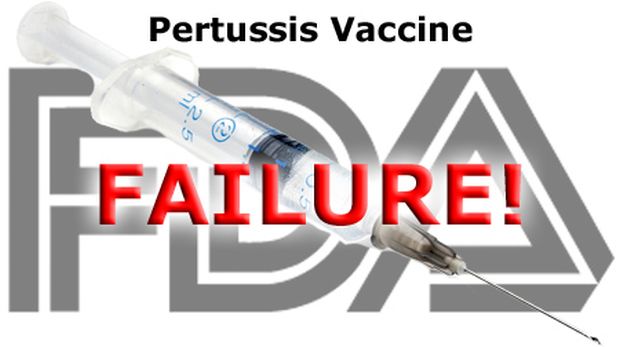
Why is the CDC and FDA Still Recommending the Failed Whooping Cough Vaccine? – February 19, 2014
Whooping Cough Outbreaks Among Vaccinated Older Children Increasing – February 19, 2014
Pertussis Vaccine Failure is not Just Modern but Historical: Vaccine has Never Been Effective
– February 19, 2014
DTaP (Diphtheria, Tetanus, and acellular Pertussis) vaccine side-effects – CDC
– Risk-Benefit Analysis: Diphtheria, Tetanus, Pertussis
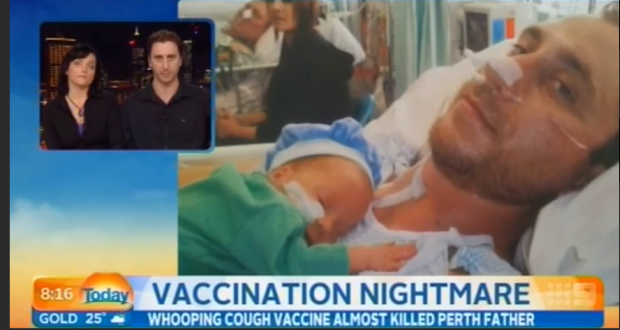
– Whooping Cough Vaccine Nightmare
– Whooping Cough Outbreak at California School Among Vaccinated Shows Vaccine Failure
– Pertussis vaccines a dangerous failure – Dr Sherri Tenpenny
– DPT Vaccine Danger – WABC – Regis Philbin With Guests – 1986
– The pertussis vaccine controversy in Great Britain, 1974–1986- Jeffrey P. Baker
https://online.manchester.ac.uk/bbcswebdav/orgs/I3075-COMMUNITY-MEDN-1/DO%20NOT%20DELETE%20-%20PEP%20Quality%20and%20Evidence/QE-PEP-HTML5/media/F8430185-03E3-C538-8362-DE46812E97BE.pdf
——————–
 DTP Vaccine Severely Damages Four-Month-Old Infant For Life
DTP Vaccine Severely Damages Four-Month-Old Infant For Life
http://www.stopmandatoryvaccination.com/parent/dtp-vaccine-severely-damages-four-month-old-infant-life/
——————–
– Study: DTP Vaccine Associated With 212% Increased Infant Mortality Risk
——————–

– DTP Vaccine Increases Mortality in Young Infants 5 to 10-Fold Compared to Unvaccinated Infants – https://worldmercuryproject.org/dtp-vaccine-increases-mortality-young-infants-5-10-fold-compared-unvaccinated-infants/
——————–
TESTIMONIES:
Good morning i am desperately seeking help in reversing some vaccine damage to my grand daughter. She just received the DPT vaccines about 2 months ago and she has a consistent cough since. She has days not being able to eat as she keeps throwing up. She doesn’t seem to get any fever or at least very low. Also her attitude seems to have reverted to a more childish behavior. Any help on links to watch for reversing damage would be a god send. Thank you so much!
D.
—–

——————–
——————–
– Treating whooping cough:
Whooping cough treatment – by Hilary Butler, June 06, 2012
Vitamin C for Whooping Cough – by Suzanne Humphries, MD, September 7, 2012
Homeopathy dramatically more effective at preventing and treating whooping cough than allopathic medicine – by: Carolanne Wright November 26, 2012


